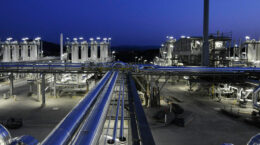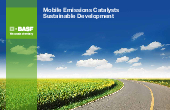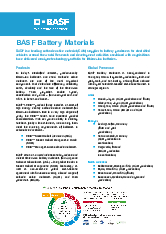
Governments around the world regularly introduce new regulations establishing increasingly strict limits for emissions of pollutants by light- and heavy-duty vehicles. In Brazil, where I live and work, a new stage of PROCONVE, the New Emission Limits Control Program, is expected to take effect in 2022. The regulation establishes emissions limits by light motor vehicles, which in some cases require a 40% reduction. The Brazilian automotive industry is now preparing to adapt to the new limit.
Now is a good time, given the global market dynamics, to highlight some technologies in the automotive market that can reduce emissions’ impact on air quality, not just in Brazil but around the world. They are green hydrogen, electric and hybrid cars, and flex and ethanol engines. Let’s dive in.

To make the future of the global carbon-neutral economy possible in the shortest time, green hydrogen must gain strength within the market and will be increasingly present in all discussions for use as an energy source in the various segments – and especially for mobility. Green hydrogen is a promising source of clean and renewable energy. It carries a large amount of energy and can be obtained from renewable sources, which are very abundant in my home country of Brazil. When a vehicle is fueled with hydrogen, the result of its combustion is a water vapor. This factor makes it one of the cleanest sources available on the market. We are always attentive to market trends and, although not yet commercialized in Brazil, this fuel type has been placed on many agendas within our workshops, forums, and trainings at BASF.
It is not new that electric and hybrid cars bring several benefits. But what is little discussed is that, in Brazil, hybrid vehicles, with flex combustion engines, which circulate ethanol, already have a better CO2 emission level than the target set for Europe in 2033.
Second technology trend is the electrification of mobility and the pending bans of fossil fuel cars that are under discussion in Europe, which is expected to take place by 2035. This trend has also been gaining strength in Brazil. It is not new that electric and hybrid cars bring several benefits, but what is little discussed is that, in Brazil, hybrid vehicles with flex combustion engines that circulate ethanol have a better CO2 emission level than the target set for Europe in 2033. This is because biofuels combined with our energy matrix gives us the conditions to reach the established goal. Around here, battery electric or hybrid vehicles are beginning to become a reality. This year, 7,290 EV/hybrid vehicles were sold in Brazil – an increase of 29.4% compared to 2020.

The third technology, already well established in Brazil, are flex and ethanol engines. The production of biofuels from renewable sources, such as ethanol, is the closest to carbon neutrality and is produced in abundance in the country. At BASF, we have innovative catalyst technologies already employed in our customers for flex and ethanol cars. The catalyst is a ceramic honeycomb substrate coated with precious metals capable of neutralizing the hydrocarbons (HC), carbon monoxides (CO), and nitrogen oxides (NOx) gases produced by combustion engines powered by gasoline and/or ethanol. More than 99% of these pollutants are converted into non-harmful gases. This is the "three-way" catalyst (TWC), which is considered one of the most important solution ever created to combat pollution. BASF has already reduced more than 40 million tons of pollutants from emissions of cars, trucks and motorcycles from Brazil and neighboring countries in South America with its catalysts. Without them, these pollutants would be released by vehicles directly into the air.
Being connected to the possibilities of innovation and the future demands of the market, especially in the automotive sector, are some of the priorities that we need to keep active in our daily lives. Here at BASF, we create chemistry for a sustainable future. We are aware of the numerous possibilities and new technological developments that will ensure a smarter, more efficient mobility future that does not negatively impact the environment. Will you help us build that future?








